If you’ve ever been to the Vatican or watched for a puff of white smoke on live TV, you probably noticed something colorful. Or rather, something wholly mind-blowing in the modern era of tactical military design—a troop of tri-color pantalooned papal protectors wielding halberds, seemingly straight out of a Raphael painting.
But these are not hired cosplayers. This is the Swiss Guard, the pope’s personal security team—and today they’re protecting the college of cardinals as they vote on the next Catholic leader, decked out in what Encyclopedia Britannica has dubbed “among the oldest uniforms in continuous use.”
It’s more Met Gala than military. Here’s how this bold anachronism came to be.
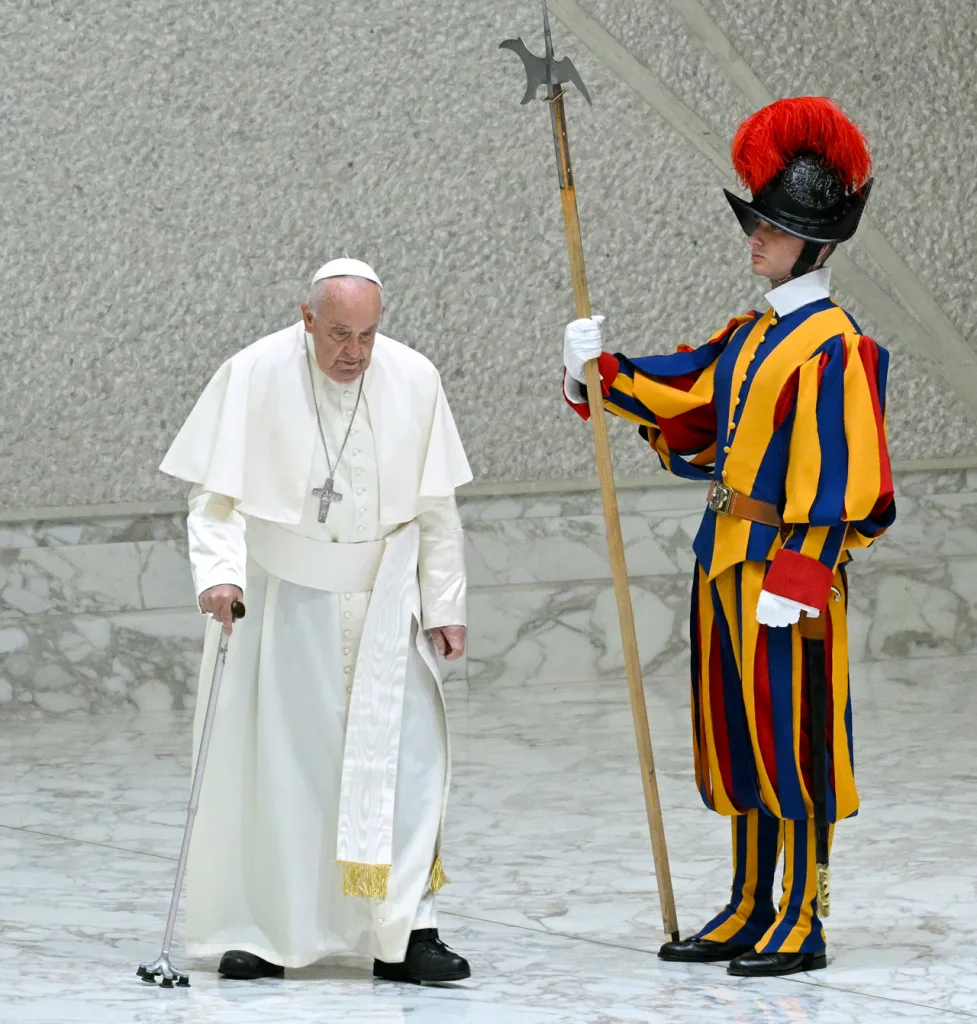
SWISS ARMY LIFE
Of course, there’s another anomaly at play here: Why the mini army is dubbed the Swiss Guard despite being located within the world’s smallest country (Vatican City), which is nestled within Rome.
As it turns out, rather than being a false eponym, the name is quite literal. In the late Middle Ages, Swiss mercenary forces were revered for their highly effective (read: deadly/terrifying) tactical fighting. Other countries in the region hired them to great effect—so in 1506, Pope Julius II brought 150 of them to the Vatican.
It was a fortuitous decision, and one that would save Pope Clements VII’s life in 1527. On May 6—the day in which new Swiss Guard members are now traditionally sworn in every year, though that has been postponed in 2025 due to the conclave—Charles V’s soldiers sacked Rome. Of the Guard’s 189 members, 147 were killed, and they saved the pope’s life by ferrying him to safety through a secret passage.
Today, the Vatican has a police force, which handles general security and law enforcement in the city. But the Swiss Guard exclusively protects the pope and his residence, and also travels abroad with him, in addition to safeguarding conclaves. And they do it with more than just those halberds—all members of the Guard must be between 19 and 30, Catholic, unmarried, and have already completed basic training with the Swiss Army, giving the 135-strong force proficiency with military tactics and modern firearms, which they are indeed equipped with.
There’s more than meets the eye in those pantaloons. And not everyone is wearing them—some guards are in plain clothes and may appear to be tourists walking next to you.
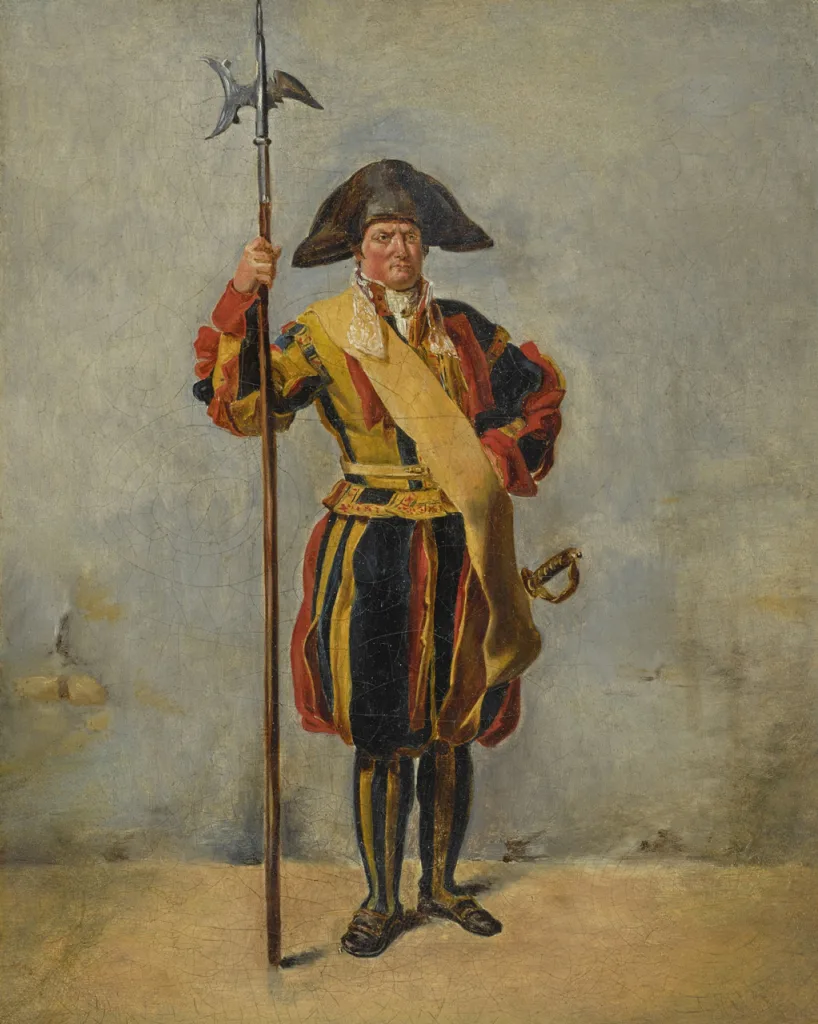
“THE MOST PICTURESQUE UNIFORM OF ALL”
If you were to Google just what the heck, exactly, the Swiss Guard are wearing, you’d quickly discover that the uniforms were designed by Michelangelo, who Julius II also commissioned to paint the Sistine Chapel. And that would be a myth, which everyone from The New York Times in the 19th century to Da Vinci Code author Dan Brown has perpetuated. Rather, as the Vatican has detailed, when the mercenaries first rolled into the city, they were dressed like any other soldier of the 1500s, donning doublets and stockings. It’s believed that Julius II gifted them with the beginnings of their signature stylistic flair when he incorporated yellow and blue—colors from his family coat of arms—into their uniforms.
According to the Vatican, clothing had become finer and more colorful during the Renaissance, and red was in vogue. So Julius II’s successor, Leo X, took the opportunity to incorporate it into the uniforms as a nod to the colors of his family, the powerful Medici, during his reign from 1513 to 1521. Tweaks and revisions were made over time, with history intervening at various points. For example, as the Vatican details, there was no money to make updates to the uniforms during Napoleon’s rule, “but some years later, under Leo XII, various attempts were made to copy Napoleonic uniforms, but fortunately without success; otherwise the splendid old uniforms would have been lost forever.”
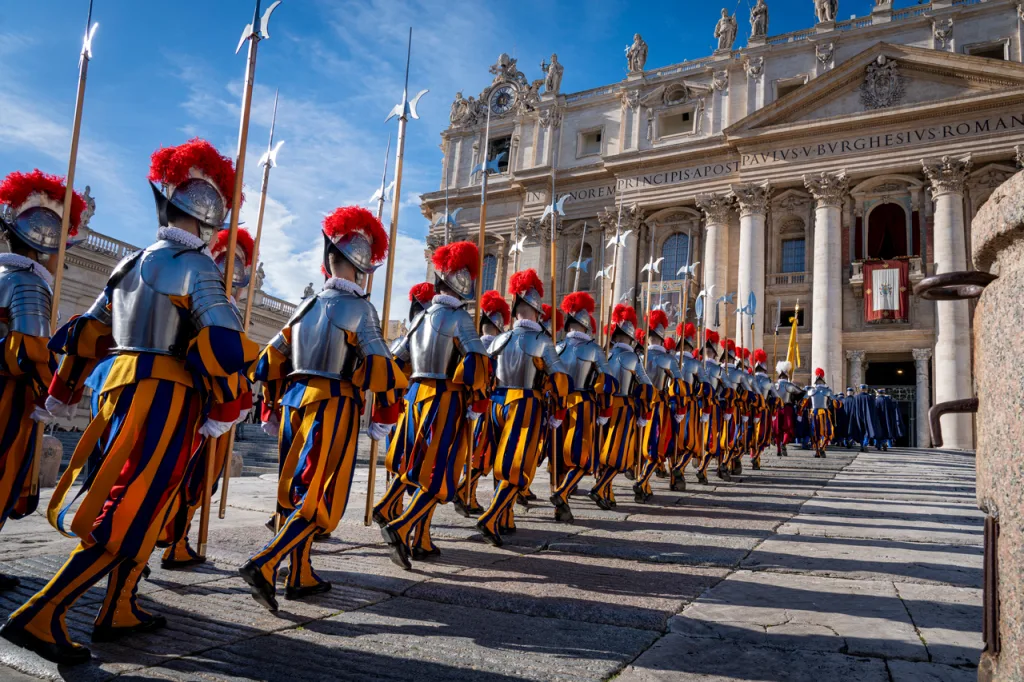
The current incarnation of the uniforms came in the early 20th century when a man named Jules Repond refined their form as we know it today (and who the Vatican notes “was gifted with an exceptionally fine taste for colors and shapes”). Pope Pius X appointed him as commander of the Swiss Guard in 1910—and he immediately managed to rankle the ranks. The Swiss Guard had become largely ceremonial, so he brought back rigorous military exercises and rifle practice. He mandated that only true Swiss natives could enroll. And he studied Raphael’s frescoes and refined the uniform, drawing inspiration from its Renaissance-era appearance. Over the years the uniforms had been variations on a theme, and by 1914, Repond brought them to their final form. Today, 111 years on, they’re nearly the exact same design.
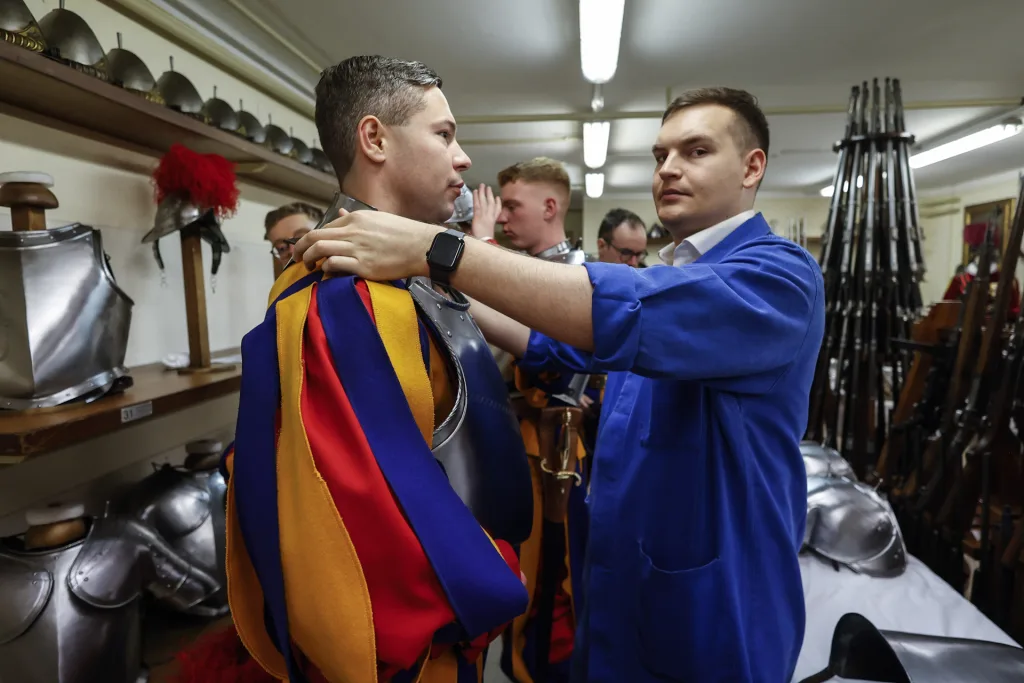
TAILOR-MADE
There are a medley of variations to the uniform for different occasions, and even a subdued blue “exercise uniform” that is worn by the Guard during night operations and when working, say, the gate at the St. Anne’s entrance. (The Guard politely declined to comment for this story, given, you know, the whole conclave at hand—but as they detail on their website: “The main roads are also located there, and the colorful Gala uniform would cause too much distraction for the motorists.”)
No matter which uniform a member of the Guard sports, there’s a good chance it was made by Ety Cicioni, the Vatican’s chief tailor since 1997. As the CBC reported, the biggest challenge is keeping the uniform the same as Repond’s vision despite the passage of time, and its impact on materials and techniques. Still, he and a team of seven manage to churn out 120 a year using prized wool from the Italian city of Biella. Per the CBC, every outfit is made from 154 pieces of fabric—and Cicioni has also designed costumes for Vatican-adjacent films, such as 2019’s The Two Popes and 2023’s The Pope’s Exorcist.
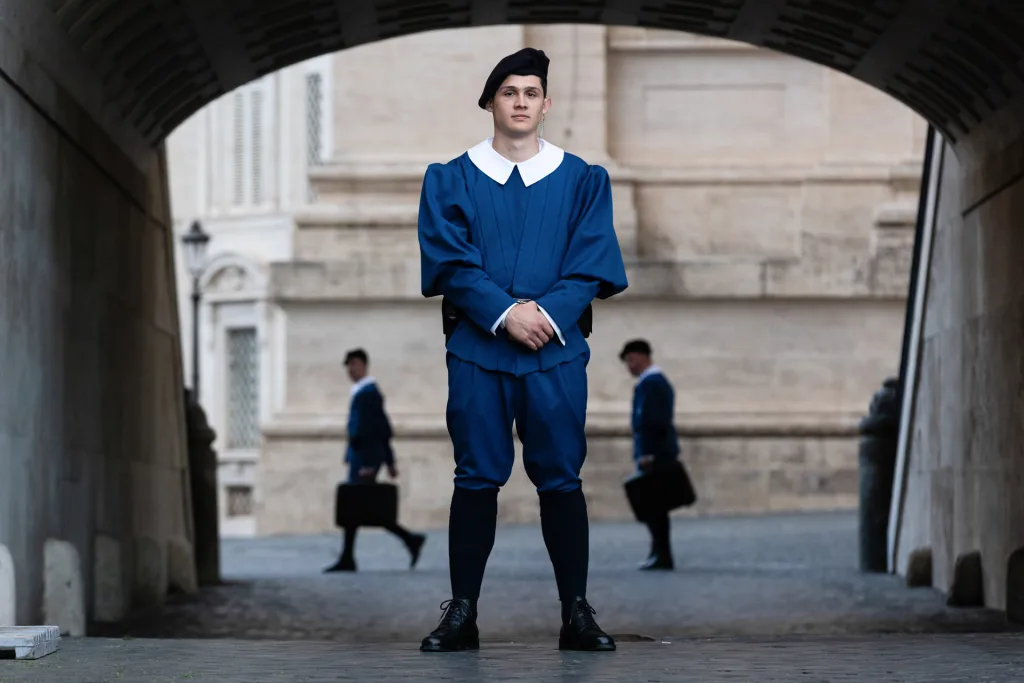
The one thing that has changed in the overall design of the uniform—the Swiss Guard got a helmet glow-up in 2019 when their scorching metal morions were replaced with breathable 3D-printed PVC counterparts.
Ultimately, being a guard isn’t all halberds and Renaissance history. In their off-time, they play on the FC Guardia soccer team, and compete against museum attendants and other groups in the Vatican Championship. They can join the Vatican band. They get to dine on Swiss and Italian cuisine cooked by Albertine nuns from Poland.
What they can’t do is play fast and loose with those wild uniforms. They’re allowed to keep them for five years after they leave the Guard, or they can be buried in them. But they are explicitly banned from selling them.
Still, if you’ve got $47,500, you could always try eBay.
